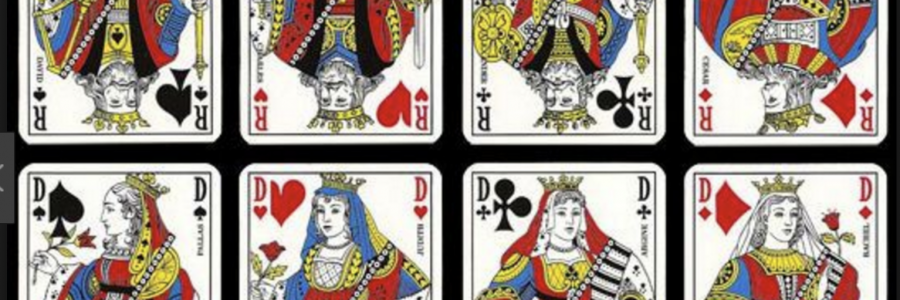
Playing cards are a coherent form of calendar
Playing cards
Playing cards goes all the way back to Imperial China as early as the 9th century. The playing cards entered the southern Europe. In the 14th century. The four suits in a standard deck of playing cards is thought to have originated in the Middle East. These suits evolved into today’s playing card suits with the coins now being diamonds, the cups, which stood for love turned into hearts, the spades replace the swords and the sticks are now clubs.
The French rulers saw a way to make more money by taxing the Ace of Spades.
Traditional deck of playing cards area a coherent form of a calendar. There are 52 weeks in a year and so are 52 playing cards in a deck.
There are 13 weeks in each season and thus there are 13 cards in each suit.
There are 4 seasons in a year and 4 suits in the deck.
There are 12 months in a year so there are 12 court cards (those with faces like King, Jack and Queen in each suit.
The red cards represents the day and the black cards represents the night.
If you let
Jacks =11, Queens = 12, and the Kings = 13, then add up all the sums of 1+2+3=… to 13=91.
Multiply this by 4, for the four suits therefore 91 x 4 = 364, add 1 that is the joker and you will arrive at 365 being the days in a year.
Is it a mere coincidence or a greater intelligence?
Now add the sum of the letters in all the names of the cards
Add up the letters in “one, Two , three, four, Five, six, seven, eight, nine, ten, Jack, Queen, King” =52
The spades indicate ploughing/ working
The Clubs indicate flourishing and growth
The Diamonds indicate reaping the wealth
The Hearts indicate love thy crops.
